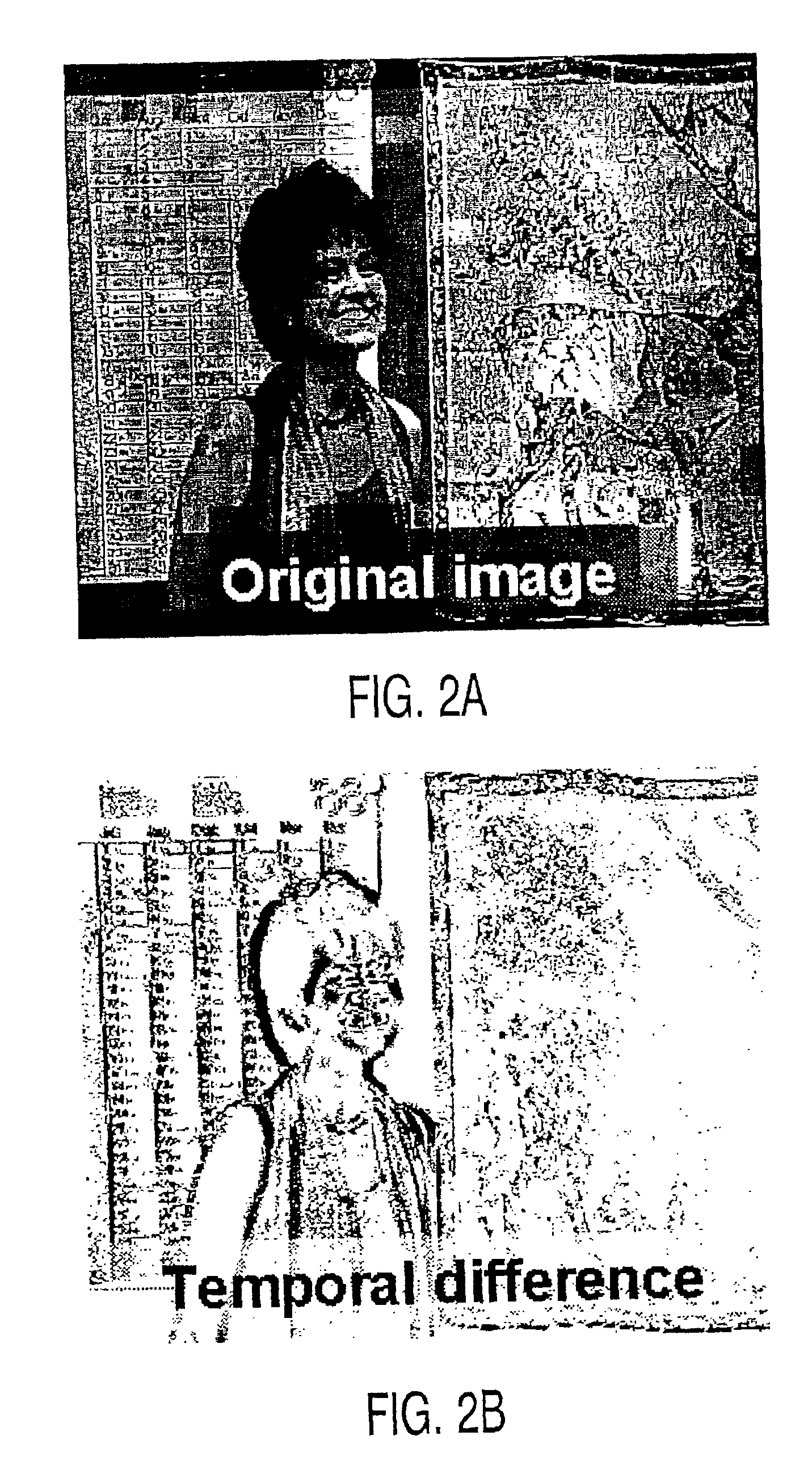Recognizing film and video objects occuring in parallel in single television signal fields
a technology of television signal field and film and video object, which is applied in the field of detecting motion picture film sources, can solve the problems of unreliable output of detector
- Summary
- Abstract
- Description
- Claims
- Application Information
AI Technical Summary
Benefits of technology
Problems solved by technology
Method used
Image
Examples
Embodiment Construction
Introduction
[0045]Hereinafter, a method to detect a film mode of individual objects in a scene is proposed. To that end, first of all, a method is described to identify individual objects in a scene. Individual objects are identified by motion estimation, i.e., those portions of a scene that can be described with a same motion model are identified as belonging to a same object in the scene. Motion estimators are known as such from the prior art, e.g., from Refs. [1], [3], [4], [5], and [6]. Of these references, Ref. [1] describes a motion estimator enabling identification of objects in a scene without the need to apply image segmentation.
[0046]For the present invention, a motion estimator is preferred that is designed to be suitable for picture rate conversion, with a computational complexity suitable for consumer electronics application, i.e., comparable to Refs. [5] and [6].
[0047]The most striking characteristic of the object motion estimator described earlier in Ref. [1], is that...
PUM
 Login to View More
Login to View More Abstract
Description
Claims
Application Information
 Login to View More
Login to View More - R&D
- Intellectual Property
- Life Sciences
- Materials
- Tech Scout
- Unparalleled Data Quality
- Higher Quality Content
- 60% Fewer Hallucinations
Browse by: Latest US Patents, China's latest patents, Technical Efficacy Thesaurus, Application Domain, Technology Topic, Popular Technical Reports.
© 2025 PatSnap. All rights reserved.Legal|Privacy policy|Modern Slavery Act Transparency Statement|Sitemap|About US| Contact US: help@patsnap.com



